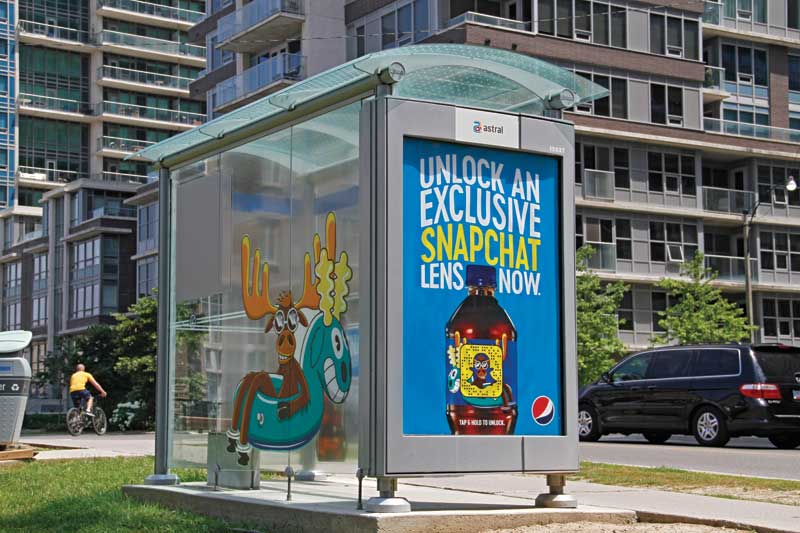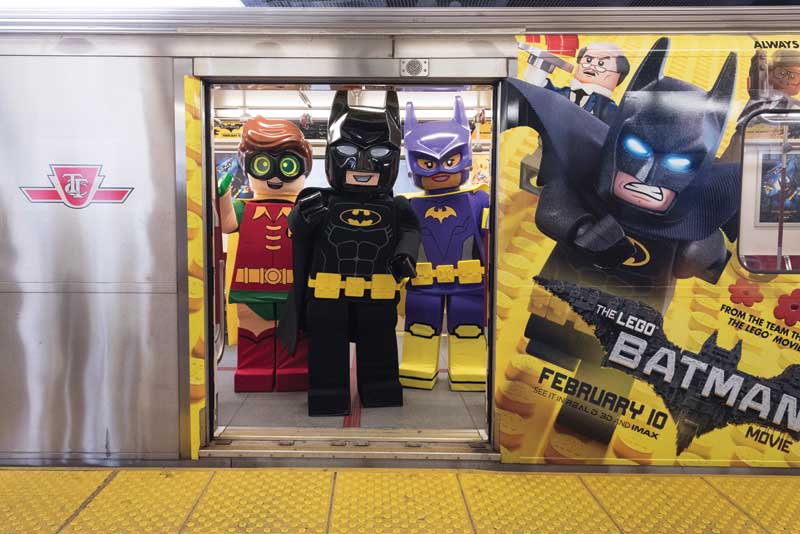
Pepsi Canada partnered with Snapchat on transit shelter ads that encouraged commuters to scan codes with their mobile devices.
Viewing OOH positively
In an era of unprecedented disruption of media, OOH continues to be viewed positively across generations. This is important because consumers’ receptivity to a given form of advertising has a direct effect on the level of attention they pay to it and whether or not they are inspired to take related action afterwards, e.g. buying the advertised product.
Studies have shown people are generally more positive toward traditional advertising and more skeptical about digital forms of advertising. In 2016, for example, advertising market research firm Kantar Millward Brown conducted a global study that showed even consumers born after 1995, who have grown up in an age of high-tech communications and with prolific use of social media, have a more positive attitude toward outdoor ads than they do toward other, newer, digital media.
This does not mean there is no place for newer technology, of course. Through a recent partnership between Pepsi Canada and Snapchat, for example, transit shelter posters and wall murals displayed a Pepsi bottle with a Snapcode for consumers to scan with their mobile devices to unlock exclusive ‘lenses’ for fun, interactive photographic applications. The concept was a hit.
Creating contextual relevance
When an OOH ad clearly relates to the environment around it, consumers are more likely to notice it and feel it is speaking to them. Digital screens, especially, can increase the contextual relevance of OOH through alignment of content with the mindset and lifestyle of passersby.
A recent Via Rail campaign, for example, displayed messages on digital billboards that were based on the latest traffic conditions and informed drivers about how long it would take them to reach specific destinations in their personal vehicles compared to taking a train.
Similarly, when the music streaming service Spotify entered the Canadian market in 2015, the company tapped into its own real-time data to identify more than 30 neighbourhoods and develop playlists for them, based on what people in those neighbourhoods are listening to, when and how often. Customized billboards and transit ads then promoted each playlist within its corresponding neighbourhood.
The campaign was a huge success, with daily registrations for Spotify increasing by 21 per cent. The company jumped from number three to number one in the rankings of app store downloads. Most significantly, Canada’s overall streaming on Spotify increased by 71 per cent over the previous period. The campaign went on to win a silver trophy at the Cassies, Canada’s premier advertising award program, in 2017.

Warner Bros. Direct’s campaign for The Lego Batman Movie spanned subway train wraps, station murals, digital OOH (DOOH) content and experiential stunts.
From exposure to purchase
OOH not only increases brand awareness, but also motivates consumer behaviour. There is a strong correlation between people’s exposure to the medium and their subsequent purchases of the featured products.
According to a 2016 TouchPoints study—and mirroring the findings of an earlier one—nearly two-thirds of all purchases by consumers are made within the same half-hour as their exposure to OOH, including:
- 70 per cent of cosmetics.
- 63 per cent of other beauty and personal grooming products.
- 81 per cent of alcoholic beverages.
- 46 per cent of consumer electronics.
Driving online activity
Consumers born since the 1980s, i.e. so-called ‘millennials,’ are the most likely to search the web or apps while commuting, at 59 per cent, but even the least likely demographic, late baby boomers, is significant with an incidence rate of 45 per cent. OOH is in a unique position to shape this growing online activity.
Indeed, a 2017 Nielsen study found OOH is the most effective offline advertising medium in driving online activity, delivering four times more online activity per ad dollar spent than TV, radio and print.
A recent campaign for Ovarian Cancer Canada, a charity, showed how OOH can serve as a link with the online world. The bold ads, which used the term ‘ladyballs’ to evoke an emotional response and spark discussion of the disease, resulted in a 118 per cent year-over-year increase in inquiries from women about ovarian cancer, an average increase of 22 calls from donors per week and a 220 per cent increase in social engagement, with 75 per cent of donations received during the campaign coming from new donors. (The work also went on to win a 2017 Cassies award.)
Giving back
The Ovarian Cancer Canada campaign is also an example of how the OOH industry is committed to giving back to the community. In 2016, for example, OMAC member companies—including Astral Out-of-Home, Clear Channel Outdoor Canada (CCOC), since renamed Branded Cities Canada, Lamar Transit Advertising, Outfront Media Canada, Pattison Outdoor and Quebecor Media Out-of-Home—donated more than $24 million worth of advertising space to more than 120 charities and non-profit organizations across the country (more details are available at www.omaccanada.ca/community-support). These campaigns have raised awareness of important causes, boosted fundraising efforts, empowered youth and supported arts and culture.
Rosanne Caron is president of (OMAC) and (COMB) and a member of Sign Media Canada’s editorial advisory board (EAB). For more information, visit www.omaccanada.ca and www.comb.org or contact her via e-mail at rcaron@omac.comb.org.





